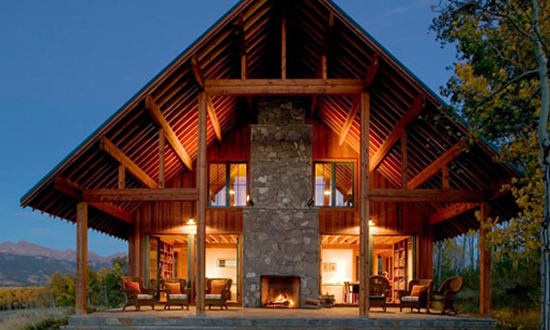Technological advancements are influencing the residential sector. As our home systems and appliances become smarter, we may notice changes in our energy consumption patterns. As a result, engineers are developing smart devices to increase a building’s power efficiency.
Eco-conscious residents can pair their advanced systems with green technologies to minimize atmospheric and surface-level waste. Increasing a home’s sustainability shrinks its carbon footprint and decreases utility costs.
There are three ways individuals can design an eco-friendly smart home.
What Is a Smart Home?
The term “smart home” signifies properties using remote-controlled, Wi-Fi-connected devices to increase residential convenience. Smart systems and appliances can sync together, communicating to perform unique functions autonomously.
People can control their devices remotely through a central point, like smartphones or tablets. They may communicate with their systems from anywhere, even outside the house, increasing safety and efficiency. They can also set timers and schedules through their cellphones.
Many individuals are installing smart systems to improve efficiency and safety. The devices send notifications to smartphones after detecting issues and hazards. They also reduce a property’s reliance on the conventional energy grid, minimizing emissions and electricity bills.
People can improve their smart homes’ sustainability by installing additional emission-reduction technologies. Light-emitting diode (LED) bulbs, solar panels and rainwater harvesting systems may create an eco-friendly smart home.
Smart Lights and LED Bulbs
Smart lighting systems connect to Wi-Fi, helping residents program and remotely control their bulbs. The technology contains motion detection sensors that adjust indoor illumination based on a room’s occupancy. It also uses natural light recognition, turning off bulbs in naturally illuminated rooms to save energy.
Residents can place LED bulbs in their smart lighting systems to increase sustainability. The lights are nearly 75% more energy-efficient compared to incandescent bulbs. They also last about 25 times longer, producing less municipal solid waste over time.
LED bulbs are compatible with various fixtures and socket sizes. Many of the lights also come with five-year warranties, increasing their reliability. Unlike other bulbs on the market, they also display various colors, improving indoor illumination.
Smart Thermostats and Solar Panels
Another common feature of smart homes is an energy-efficient heating, ventilation and air conditioning (HVAC) system. Heating and cooling functions consume nearly half of a building’s energy supply. Most residential power comes from fossil fuels, producing greenhouse gas emissions during combustion.
When emissions invade the atmosphere, they limit Earth’s ability to produce and regulate life-sufficient surface temperatures. Over time, this harms the environment and places the global ecosystem at risk. Smart thermostats improve the energy efficiency of HVAC systems by decreasing residential emissions.
Individuals can further enhance their efficiency by connecting their smart thermostats to photovoltaic (PV) solar panels. PV panels absorb photons from the sun, using them to knock electrons loose. Electrons create a direct energy current as they move throughout the solar system.
Transfer wires capture the current, converting it into an accessible source of electricity. Residents that connect their thermostats to solar panels can eliminate energy-related emissions. They may also decrease their reliance on fossil-fuel-derived electricity sources, creating an eco-friendly smart home.
Smart Sprinklers and Rainwater Harvesting Systems
People may also reduce resource exploitation by connecting their smart sprinklers to rainwater harvesting systems. These devices connect to Wi-Fi, access real-time weather predictions and adjust watering schedules. During high precipitation times, the system may reduce the frequency of watering to conserve the supply.
Individuals that connect their sprinklers to rainwater harvesting systems can eliminate their reliance on the conventional water supply. They collect stormwater in barrels, purifying it or sending it directly to irrigation devices. Repurposing rainwater for landscape maintenance significantly increases a property’s sustainability.
The Benefits of Creating an Eco-Friendly Smart Home
Residents who convert their traditional houses into eco-friendly smart homes can improve their value. Adding sustainable features also reduces an individual’s energy and water bills, enhancing their savings. The transition additionally improves local air quality, reducing emissions and increasing community health.



